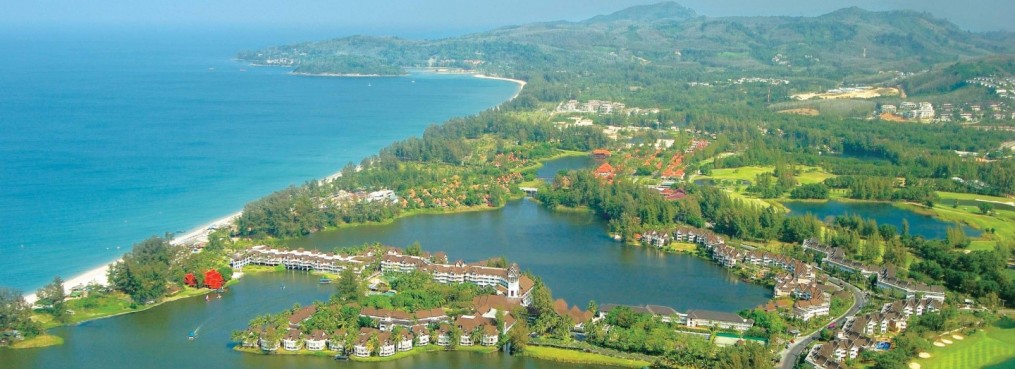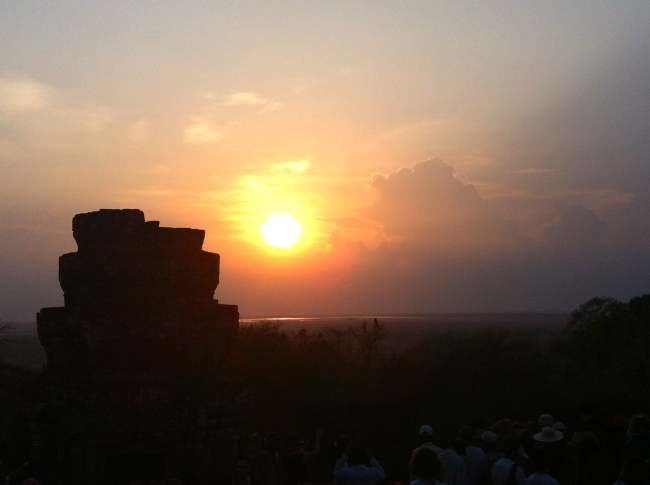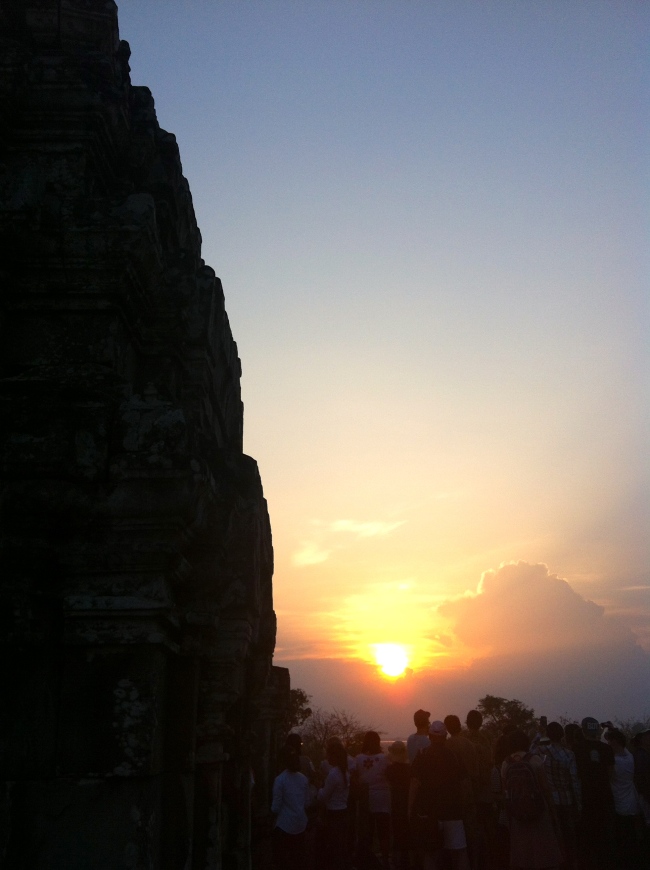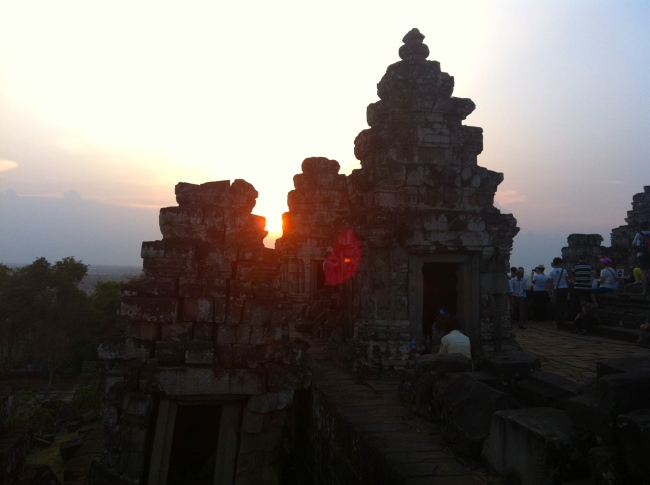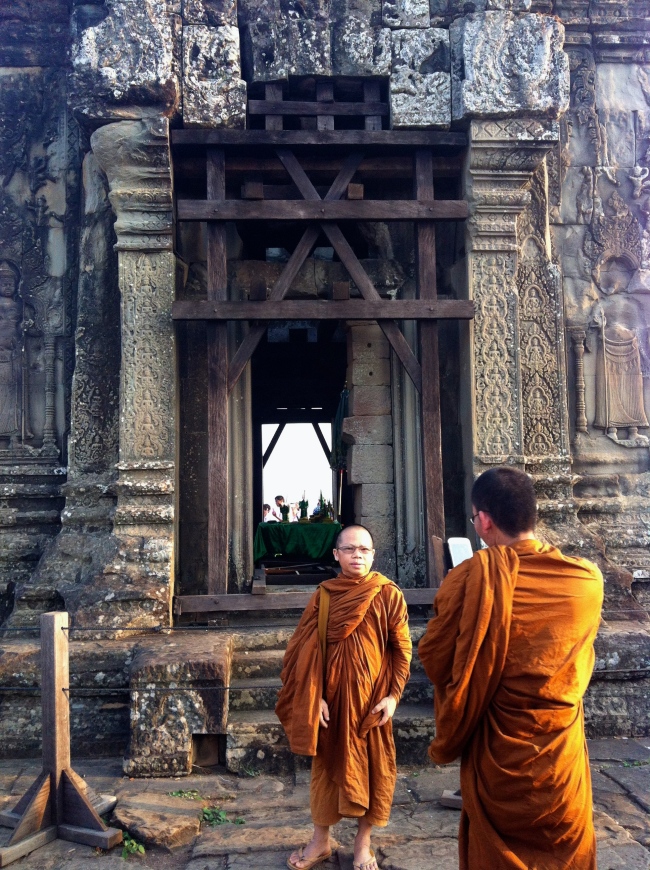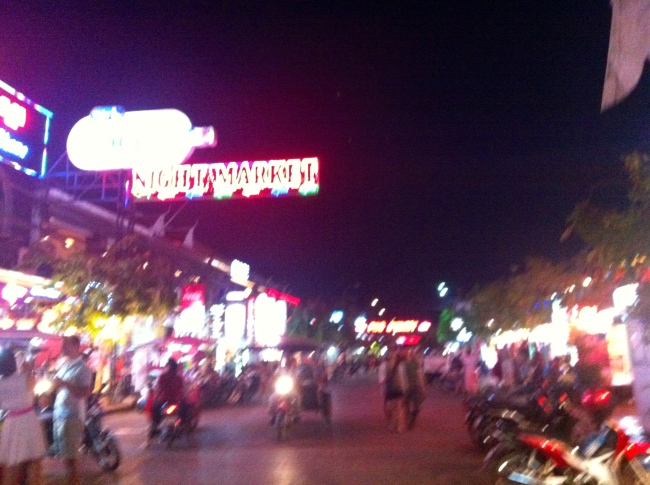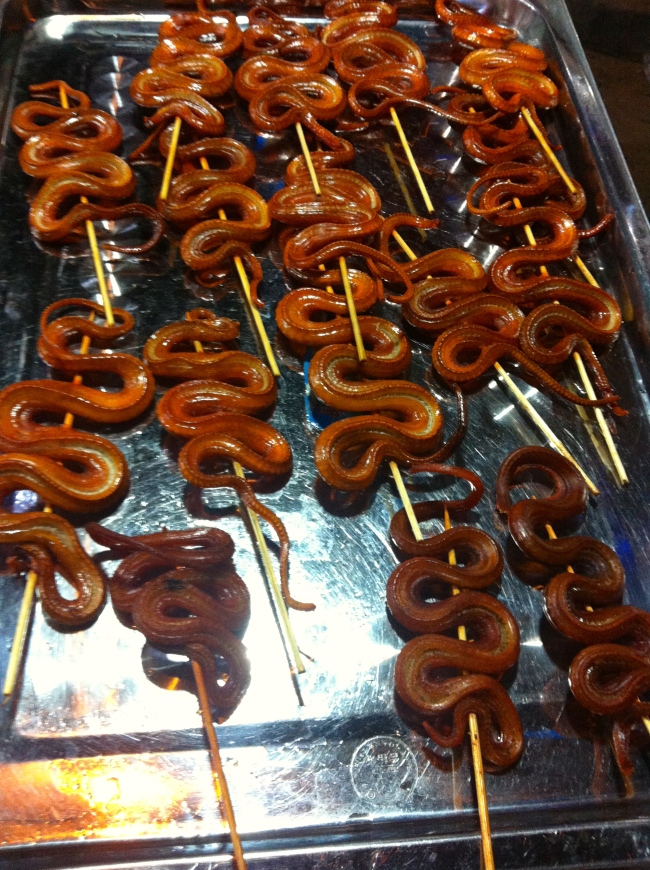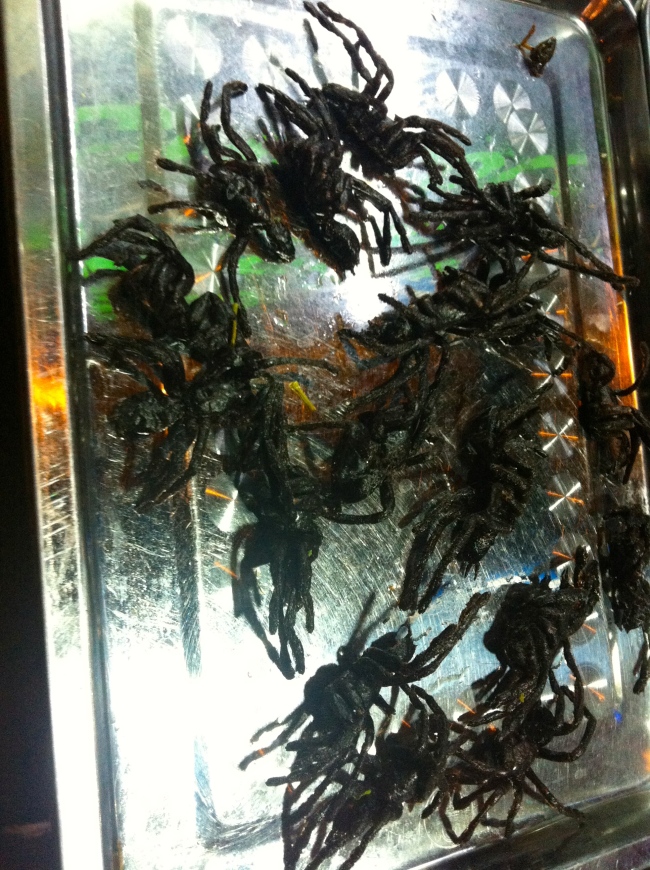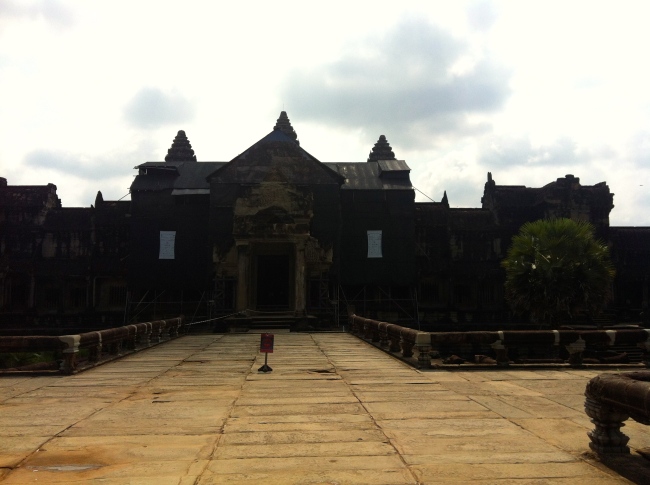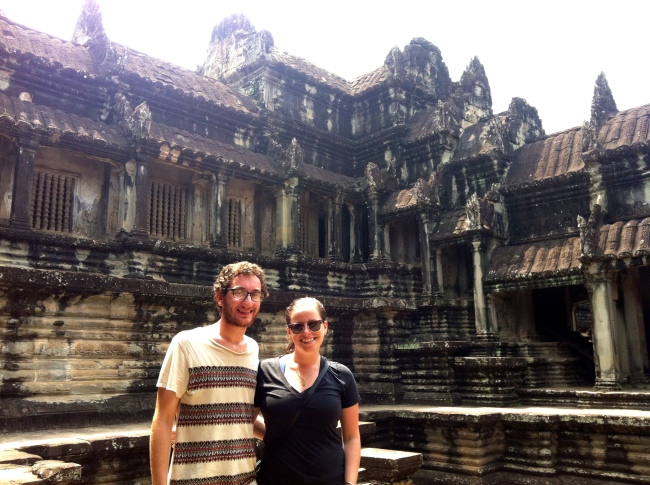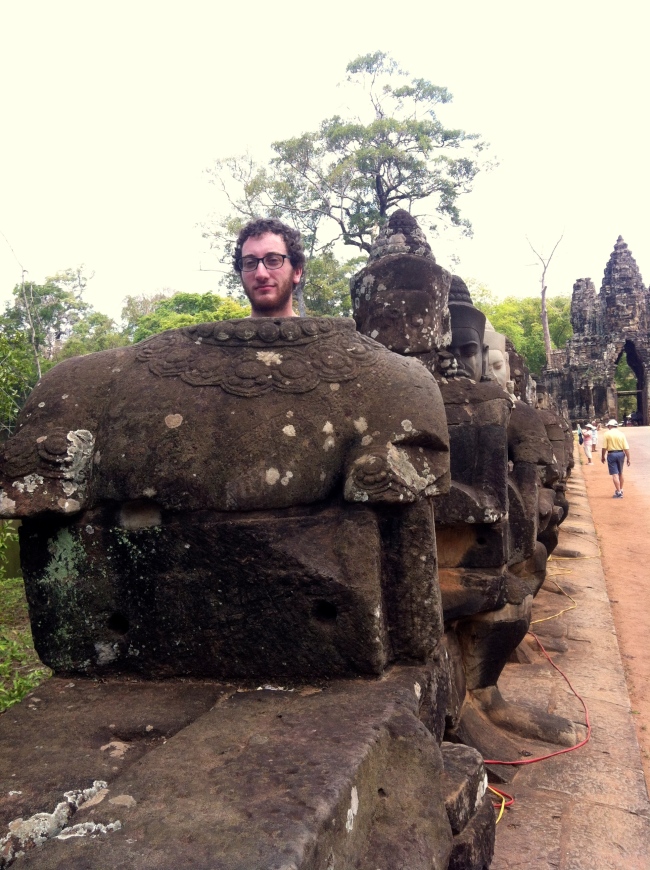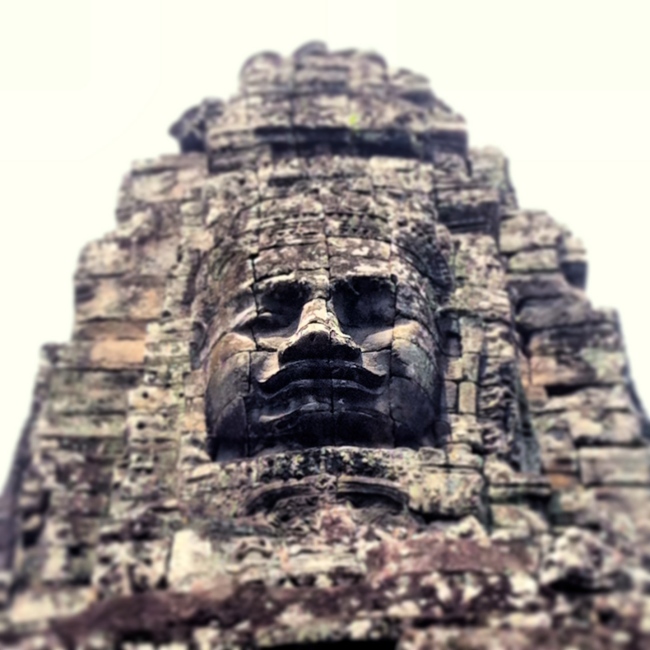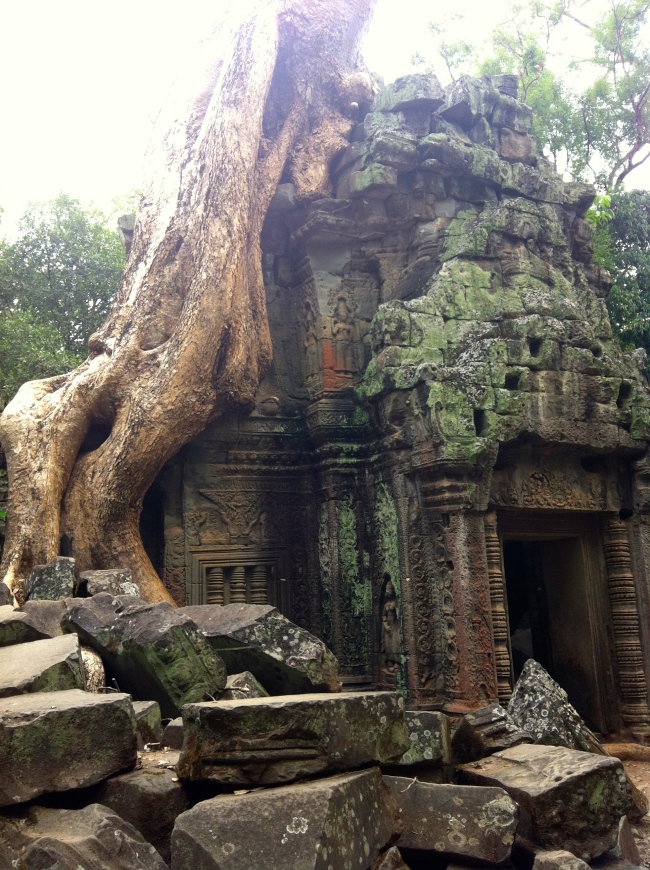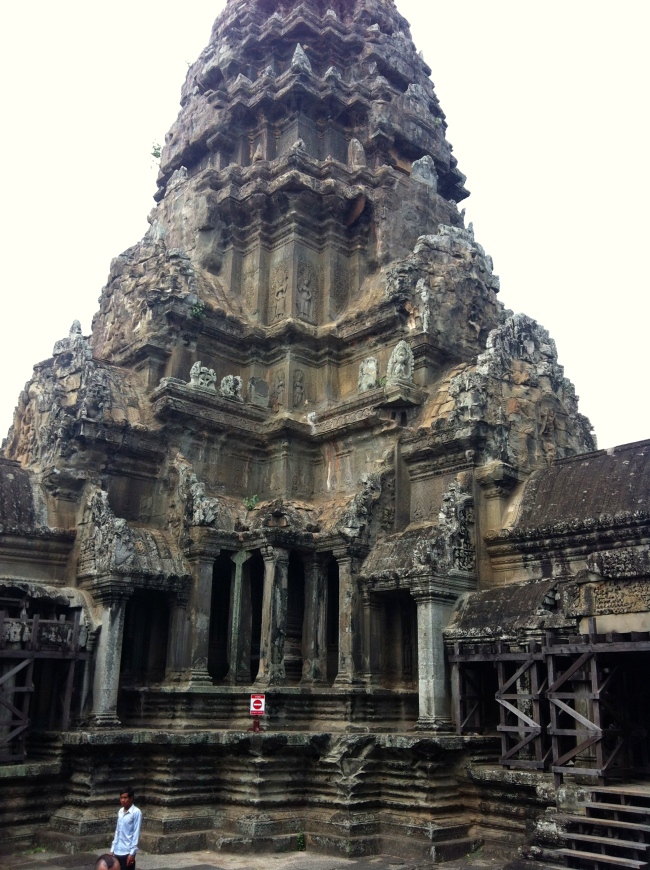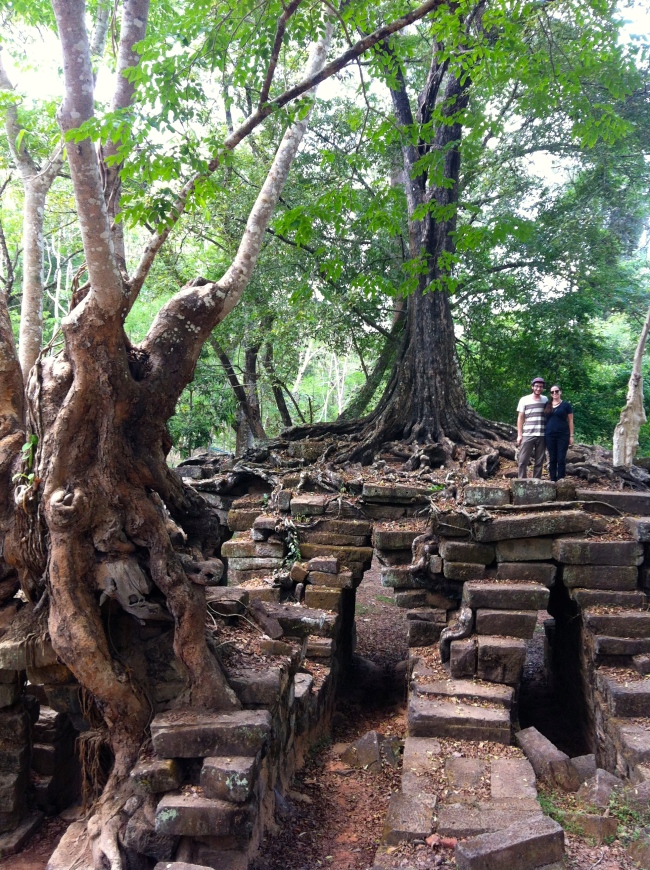Hunan Province was wonderful – we saw some familiar faces, ate some delicious food, went to a cool avatar-esque national park, walked up a mountain, saw a huge statue of Mao, and even performed at a Chinese wedding! But here is a more detailed log..
We took the fast train from Beijing to Changsha and our friend, Kavana, picked us up. Changsha is the capital and largest city of Hunan Province. We immediately got some food and then went to Taiping Street for some shopping. We had some traditional Hong Kong style desert, bought an ocarina (who knew it was a traditional Chinese instrument!?), bought tea and some Hunan spices to bring home. Now that we are nearing the end of our trip, we are stocking up on gifts for others (and some for ourselves).
By the end of the night we were so full and sleepy. We’ve noticed that Chinese food portion sizes are very similar to the states, and being away for the past 7 months we aren’t used to that at all! Kavana took us to meet some of his friends from the radio business (he’s a DJ!) and then we went right to bed.
The next day Kavana picked us up for lunch with one of his colleagues at a place famous for serving “interesting food”. Basically, that meant that I wouldn’t be eating because I’m still not used to the idea of eating snakes and fermented eggs and such… but David had some snake.
From there, we went to another lunch (all we do is eat in China!) at the bottom of Yuelu Mountain. The mountain is in the city but provides such a rural escape from buses, motorcycles and constant cars beeping at each other that we felt far away. We hiked up, walked around and saw a great aerial view of the whole city and then took a cable car down. For dinner we had our favorite – dumplings!
The next morning we had the opportunity to tag along with Kavana for some work and meeting with friends – basically just a “day in the life” for him. He’s a DJ and programmer at a radio station in Changsha and designed the broadcasting system used at over 37 stations throughout China! So impressive. At the station, we took some corny photos of us pretending to be recording on the air and met more of his coworkers. He also runs a guitar shop/studio in another part of town. At the shop, we had tea with a great friend of his – and though he didn’t speak English, through Kavana we had a wonderful conversation about the differences between parts of the US and parts of China, religion (he was so interested in Judaism) all while sipping some delicious and pesticide free (they were very proud of that fact) tea. After checking out the radio station, we visited Orange Island – famous for the huge statue of Mao Zedong.
Our last dinner in our short trip to Changsha was at a very well known restaurant there, serving “Old Changsha” food. They only have a few dishes -which I think makes it all the better as the focus is on those specialties. The decor was really interesting, too – it was a very large area for seating and then along the walls was what looked like the front of traditional homes, which you could eat in for a more private setting! We had some rice cooked with soy sauce (so simple yet done in a delicious fashion), a huge platter of craw fish/ prawns, a cold mashed up fish soup and for desert a fried caramelized banana dish!
Part 2 of our Hunan trip: Zhangjiajie
After a quick overnight train ride we found ourselves at Zhangjiajie National Forest Park (henceforth known as ZJJ). According to the tourist information provided by the Chinese government, ZJJ is the inspiration for the movie Avatar. While James Cameron has disputed this claim, ZJJ’s famous sandstone karst pillars are stunning and bare more than a passing resemblance to the movie Avatar.
On our first day at ZJJ we took an outdoor elevator (supposedly the world’s largest outdoor elevator) to the top of a mountain and proceeded to hike around the tops of various karst pillars. It was a little bit rainy and overcast, but there were still plenty of beautiful views. We past over a large natural bridge and saw many unique rock formations. As it started to get darker we headed home for the evenings. The next day we woke up early and headed around parts of the park we hadn’t seen on the first day. It was raining harder than the day before so we took a slow monorail ride through a ten mile scenic area. At the end of the monorail ride there was a big cage with about half a dozen monkeys. The cage was open so the monkeys were climbing in and out of it trying to stay dry and play with their friends. We spent a little more time wondering around the park before we had to head to Zhangjiajie City about an hour away so we could catch an early morning train back to Changsha.
Part 3 of our Hunan trip: Zhuzhou
On our train from Zhangjiajie City to Changsha we sat across from a nice Chinese couple who had just moved back to Changsha after living in Houston for more than two decades. Like most of the Chinese people we have met they were extremely nice, offering us food and eventually walking us to the bus station and helping us buy bus tickets to Zhuzhou, our next destination. Zhuzhou is a small city (by Chinese standards that is) south of Changsha, mostly known for industry and as a train station hub. We would have never visited Zhuzhou if it weren’t for David’s cousin, Ari, who has been teaching English there Since August. Our goal for our time in Zhuzhou was simple; a few days in the life of Ari.
After our bus dropped us in Zhuzhou we met up with Ari and headed to his apartment. On the 11th floor of a fairly busy street, Ari’s apartment was quite a bit different from Lucky Mansion. We relaxed for a little bit before heading to a small market at the bottom of his building. David and I were amazed to hear Ari whip out Chinese as we bought some vegetables and meat for Dinner. It was our first home cooked meal since leaving Kalasin, and it was delicious. After cleaning the dishes we went to bed early to get ready for a busy day.
The next day we woke up early, grabbed some steamed buns for breakfast, and headed to Zhuzhou Middle School #2. Ari had to classes that morning and he kindly let us sit in on them. David and I were both shocked by the English ability and behavior of his students. The students seemed much more eager to learn English and it showed. After Ari’s two classes were finished we left the school got lunch and headed to a nearby park to walk around. As we wrapped our walk in the park we headed over to Ari’s friend’s house to watch Ari’s band practice. There first gig is in a two weeks and we got a great sneak peak. When band practice was over we got dinner and headed back to Ari’s place to relax.
Zhuzhou had a special culture night held in an underpass in the city center. We had expected some traditional song and dance perhaps, but we were met with a skateboarding show and then a beat boxing/break dancing competition. Zhuzhou rocks!
The next day we went into Changsha by a quick 1 ish hour bus. We were so glad Ari was there to help us with any Chinese we needed and it was even better to actually know what we would be eating! 🙂
We all met up with Kavana again, had a great lunch and then went to one of Ari’s friends apartments. He also is an English teacher and actually lived in an apartment on his schools’ campus. We chilled and then went to a birthday all you can eat hibachi style dinner at a Japanese restaurant. At the restaurant, we met all of Ari’s teacher friends from all over Hunan Province. Dinner was great and we went to a fun bar afterwards.
Back to Zhuzhou late at night and then up early to take part in a Chinese wedding. Ari was good friends with the bride and groom so he was able to score invites for us as well. It was surprisingly similar to weddings at home, except with all Chinese food. At the wedding, we performed Outkast’s Hey Ya song for them (the first song we thought of that we all knew the lyrics and that Ari could play on the guitar). The guests loved it and everyone said we did great, although I don’t think they knew what we were really singing. It was a lot of fun to be a part of and a great cultural experience to be a guest at the affair!
From the wedding we caught an overnight train to Shanghai, where we’ll take you to next!
